Garlic is a very whimsical garden crop that requires careful care, regular watering and fertilizer application. The correct timing of planting in open ground is also important to her, because not only the productivity of tubers depends on them, but also productivity of growth, resistance to negative influences.
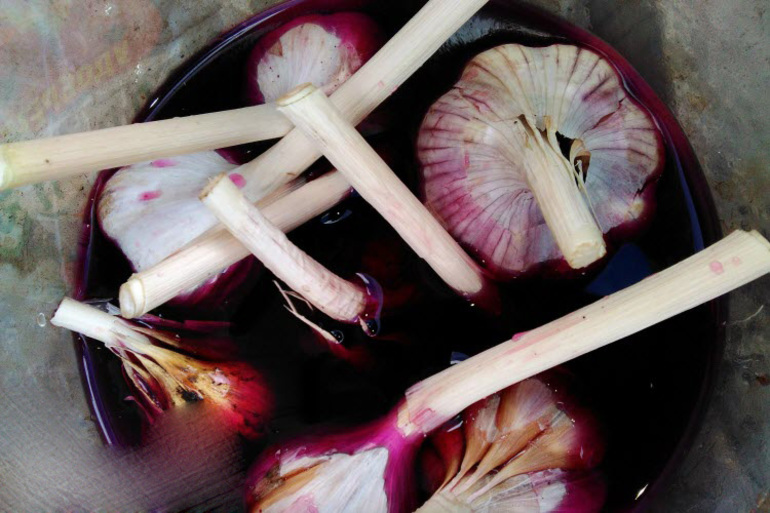
When considering options for planting garlic in the winter, it is important to consider a lot of nuances and rules.
Content
general information
Planting winter garlic in autumn It is considered a very painstaking and responsible action. It will justify itself only if the farmer shows patience and follows the schemes and recommendations of experienced colleagues. To achieve maximum success in growing such a crop, you need to do the following:
- Decide on the timing of planting garlic. Landing in the fall is doomed to failure if the wrong timing of planting raw materials in open ground is chosen.
- Clarify the intricacies and rules of caring for winter varieties.
- Read the recommendations of professionals.
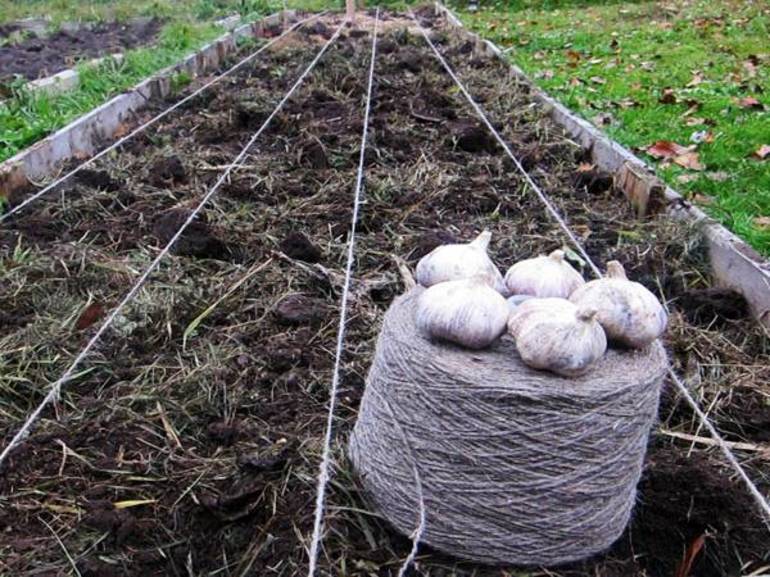
Not all beginner farmers know that in the middle latitudes two forms of garlic are cultivated: non-shooting and shooting. Their names are associated with the specifics of growth and the presence or absence of an arrow. Such a peduncle is present only in winter varieties that are sown in the ground in autumn.
In the last month of summer, bulbs are formed on the arrow, which are a natural seed. In one inflorescence, several tens of such elements suitable for autumn planting can develop.
Using onions, it is problematic to get a full head of garlic next year, because a small tuber can grow from a bulb, weighing up to 4-7 g. In the people, this fruit is called a single-tooth.
However, not everything is so simple, because there are exceptional cases when the size of the bulbs is extremely tiny. Sowing such planting stock in the soil, one cannot count on getting large garlic bulbs that can maintain their structure and appearance for several months.
A similar technique is characterized by the slow development of the culture, therefore it is advisable to use it only for small-scale home farming or in order to obtain a specific variety for further propagation.
Planting high-grade cloves
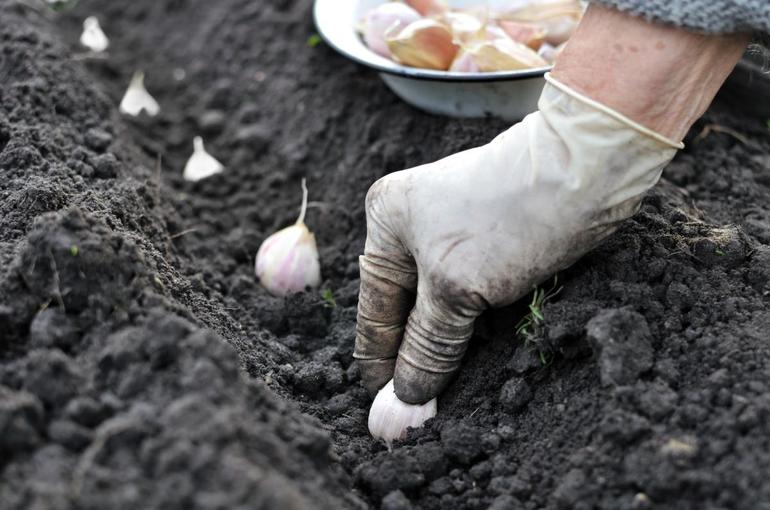
Understanding how to plant garlic in the winter correctly, it is advisable to give preference to planting full-fledged cloves. They are characterized by larger sizes, as well as resistance to intense cold. In its structure, the clove is a daughter bulb with a sufficiently developed and active bud. In one tuber, up to seven such cloves can be present, which are combined on a common bottom and covered with thin scales.
Farmers believe that productivity indicators depend on the size of planting material culture. Therefore, when planting a large clove in open ground in the winter, you can wait to receive a large bulb in the spring. When using small cloves, the size of the final tuber crop will be appropriate. In the case of the smallest planting dimensions, there can be only one developed clove inside the bulb.
Inexperienced beginners, who are just starting to figure out how to plant garlic in the fall, rarely use large tubers as planting material.Instead, they transfer them to storage and used as a food product. As for the smallest samples, they find themselves in the garden. As a result, yields are reduced every year, even if flower stalks are removed in a timely manner, this does not improve the situation. To prevent a complete loss of crop, it is better to divide the harvested teeth equally. It is also recommended to use single-tooth specimens for planting in the soil.
Optimal timing
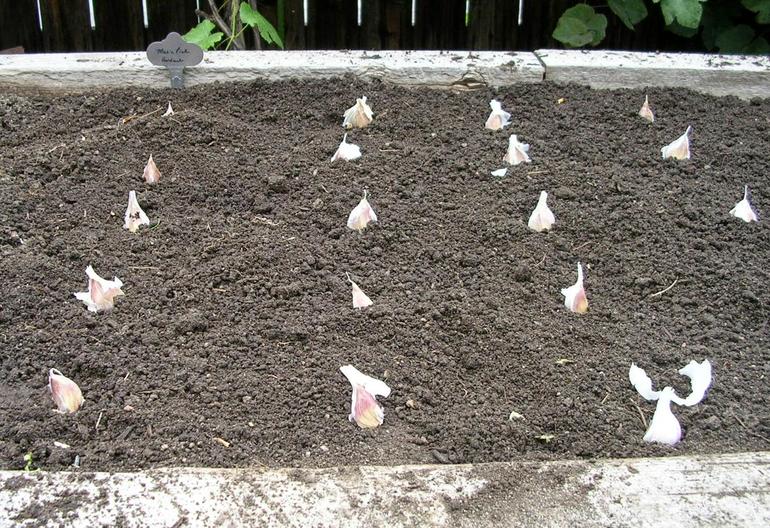
Experienced gardeners who know how to plant garlic for the winter correctly, argue that in choosing the timing of planting you need to be guided by the climatic conditions of the region.
When growing crops in middle latitudes such an event is best held in the first days of October. In the southern regions, landing is postponed to the end of this month or the beginning of November. If we are talking about the planting of garlic in the north, with a harsh climate and severe cold, it is better not to postpone the procedure for the distant future and have time to complete it until the first frost.
Residents of the Tomsk region begin planting work around mid-September. The landing deadline is October 7-10. A thermometer is a good helper in choosing a suitable date, but you should not give up intuition and advice from experienced gardeners.
Seat selection
If you want to plant winter garlic in the winter, you need to responsibly approach choosing a placewhere the culture will be grown. The future yield of tubers, their resistance to diseasesas well as the growth efficiency of new cloves.
Garlic is a photophilous plant that needs plenty of light and warmth. When searching for plots in the garden, it is important to give preference to open spaces that are constantly illuminated by the sun. It is very good if the following crops were grown in the garden before garlic:
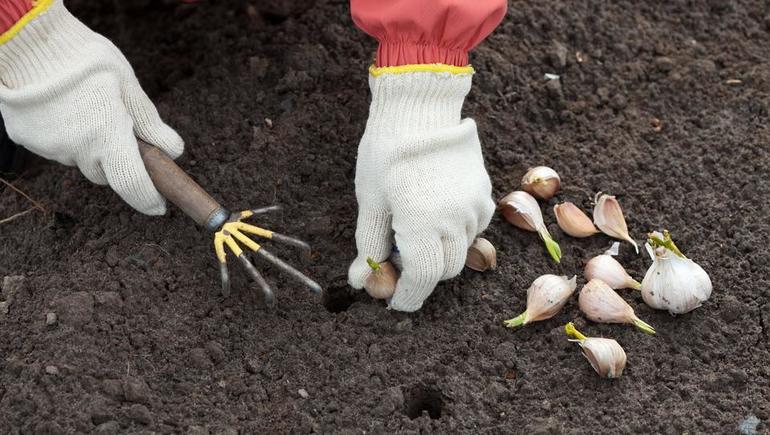
- Siderata.
- Pumpkin.
- Tomatoes
- Early cabbage.
- Leafy greens.
But there are negative predecessors of such a culture. These include:
- Carrot.
- Cucumbers
- Potatoes.
- And directly garlic.
Garlic likes a land with good air and water permeability, an impressive content of minerals and nutrients, neutral acidity and friability. The culture does not bear fruit well on acidic soils, where there is a lot of moisture from melt water or precipitation. Also, it does not tolerate cultivation on clay soil with a high peat content. All these points need to be clarified a few weeks before the preparation of planting material for planting.
Substrate preparation
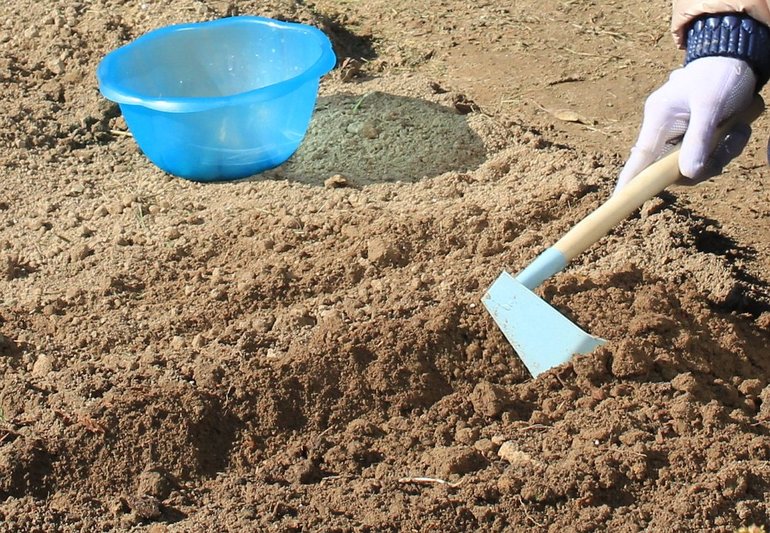
Both spring and winter garlic will develop normally only in properly prepared territory. It is very good if the selected soil is loosened, raised and devoid of bumps.
In the absence of water permeability, the culture will rot and be affected by fungal diseases. If in natural conditions it is difficult to achieve rapid drying of the soil, you can equip a home-made bed by raising it by 20-30 cm.As for the width of the bed, it can be different, but the optimal size is 1 meter wide.
Naturally, raised gardens can have a lot of disadvantages. One of them is the excessively fast runoff of water to the lower layers.But such a feature can be a plus with prolonged precipitation, because excess moisture will leave the bed faster, and in the spring, the earth can be effectively heated by sunlight. When arranging such a garden structure, it is important to carefully enclose it, otherwise the substrate will spread along with water throughout the garden.
With high soil acidity you can transfer the planting of garlic in the spring or carry out a thorough cultivation of the soil a month before planting. In this case, you need to add 200 g of lime per square meter of bed, and then carefully dig up the soil. An excellent solution is the full liming of the soil, but it implies the rejection of planting in the winter. When digging the beds, 250-300 g of lime is brought into the ground, and with the advent of spring, early varieties of cabbage are planted on the beds. At the beginning of the fall season of next year, you can sow winter garlic.
If there are no complaints about the soil composition, and it has a neutral reaction, 10−12 kg of humus are added to the bed, as well as 1 tbsp. a spoonful of superphosphate and the same amount of potassium sulfate. For autumn planting of garlic, it is not recommended to use fresh manure - it is better to replace it with humus. If this option is absent, then you can do with humus, but preferably seasoned, which lay in a heap for about 3-4 years.
Additional nuances
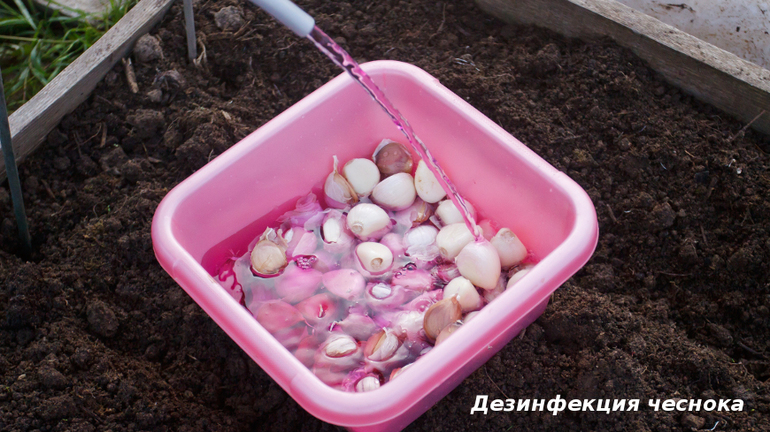
However, if the size of the beds is relatively small, you can solve the problem manually. To give the soil looseness, each square meter of the bed must be deep digged, diluted with peat and river sand.
If the situation looks the opposite and the substrate is too loose, consisting of sand, it can be compacted with clay and humus. In this case, the clay is pre-dried, and then crushed to fine fractions until it acquires a powdery state. Only after thorough processing can it be applied to the soil.
Considering the option of traditional planting of garlic with the help of cloves, it is necessary to make several rows on the bed, observing a distance of 18−20 cm between each of them. In the case of wide territories, this distance can be increased to 25 cm, but not more. The distance between planting material is determined by its size. So, the smallest bulbs are planted at a distance of 14-16 cm from each other, and larger ones - 19-22 cm. Optimum immersion depth into the soil is 4 cm.
When planting bulb onions, you can adhere to the same principle and use a distance of 20 cm between rows. But between the planting material itself, this distance should not exceed 15 cm.
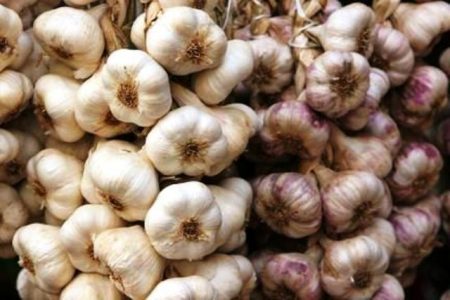 You may be interested in:
You may be interested in:Useful Tips
When growing garlic in Ukraine, the Moscow region or the middle lane, you need to be extremely vigilant and not refuse the recommendations of experienced colleagues. Today at thematic forums a lot of valuable tips are available, as well as farming secrets that make home growing such a crop as productive as possible.
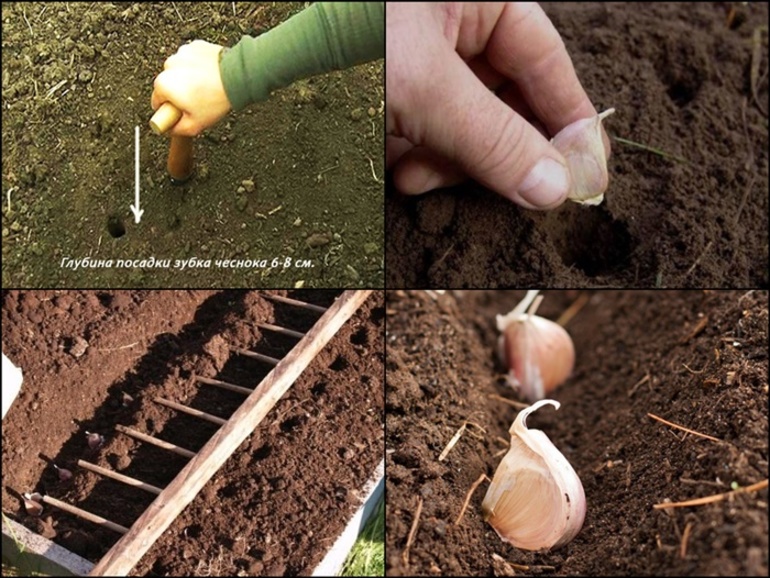
Before you start planting bulbs in open soil, it is necessary to carry out a comprehensive treatment of the substrate.It is advisable to do this 10-15 days before the event. If the landing is planned for the end of September, then already in early autumn, you can begin preparatory work.
 You may be interested in:
You may be interested in:To process planting material before planting, according to experienced gardeners, is not necessary. Nevertheless, 1−2-hour aging of the bulbs in a weak manganese solution will not be deprived, however, the entire success of the cultivation depends on further agrotechnical techniques.
In the northern regions, winter garlic is additionally insulated with manure based on rotten straw, preferably horse, as well as sawdust mixed in equal proportions. Also, it does not hurt to use a layer of humus of 18−20 cm. Only when performing such actions, it is important not to forget to remove the insulation in the spring so that the soil warms up faster by the sun.
These are the main agrotechnical details of planting garlic in the fall before winter. It remains to adhere to them and not ignore the advice of professionals.

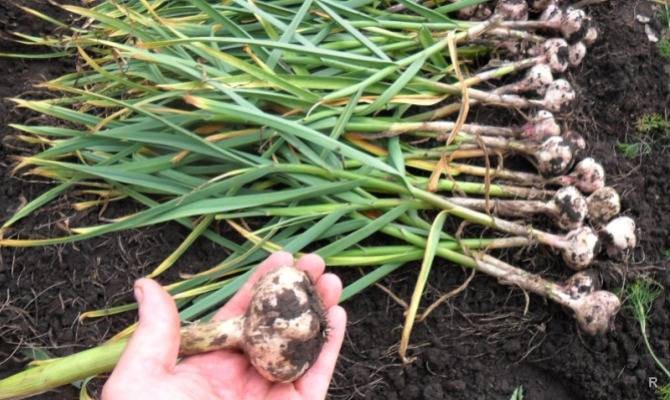
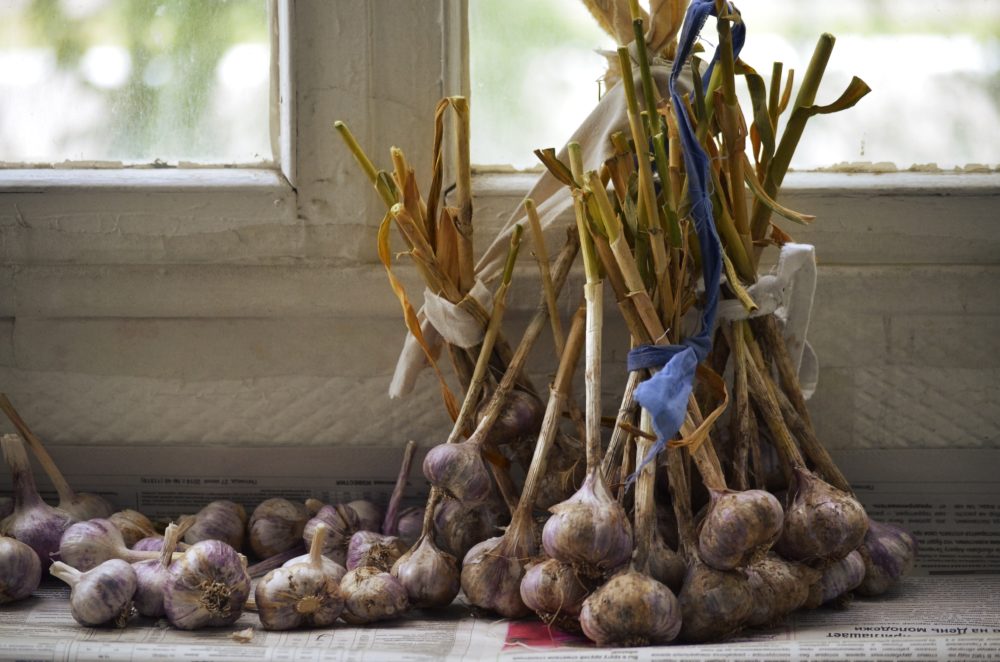
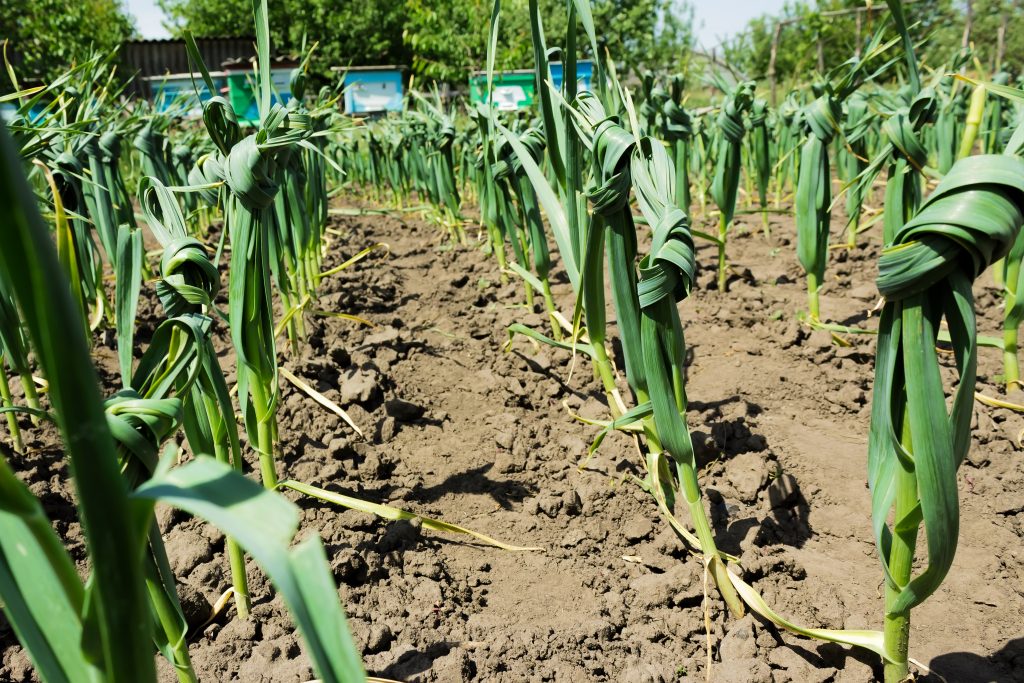
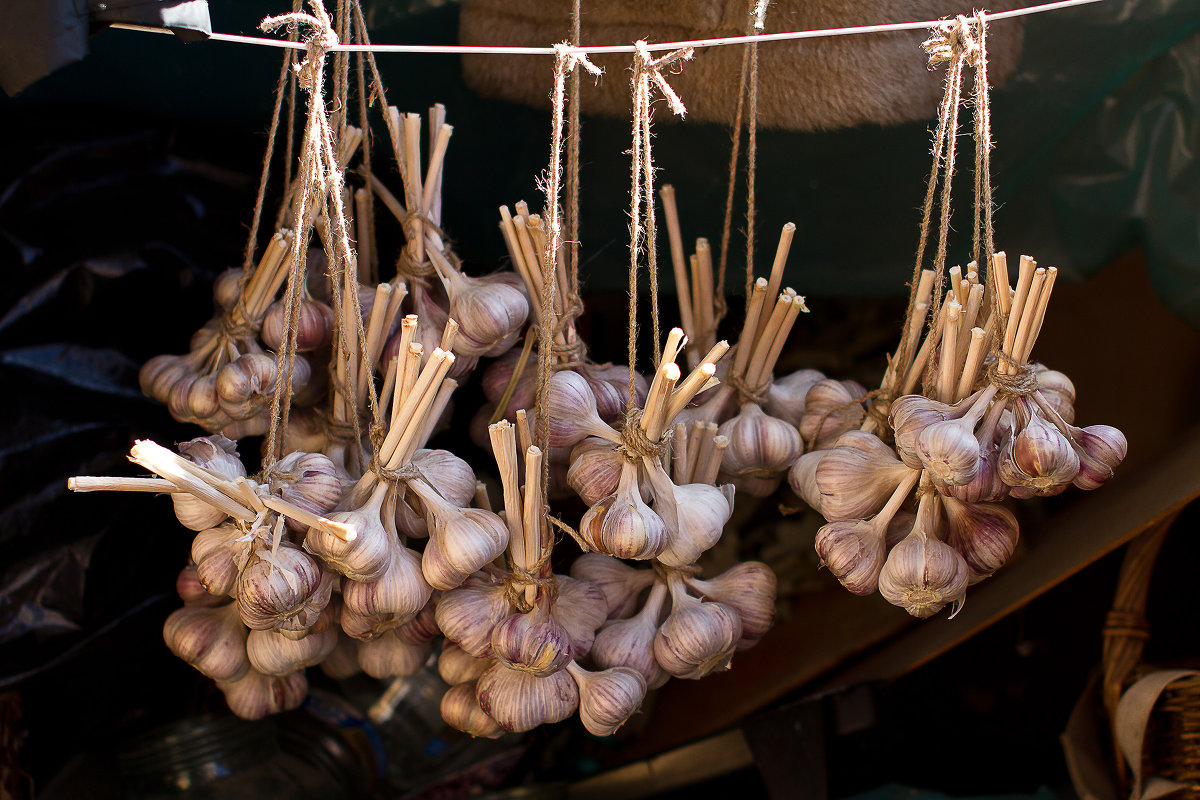 Methods for storing garlic in the winter at home
Methods for storing garlic in the winter at home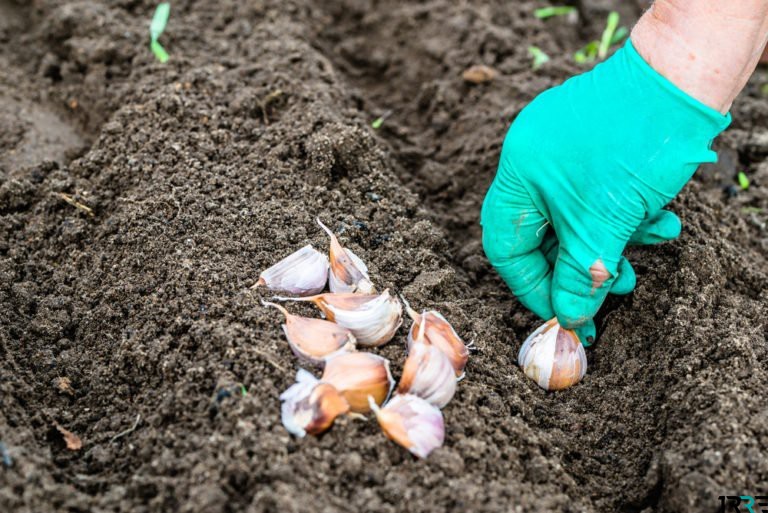 Processing garlic before planting in the winter: soaking garlic and tillage
Processing garlic before planting in the winter: soaking garlic and tillage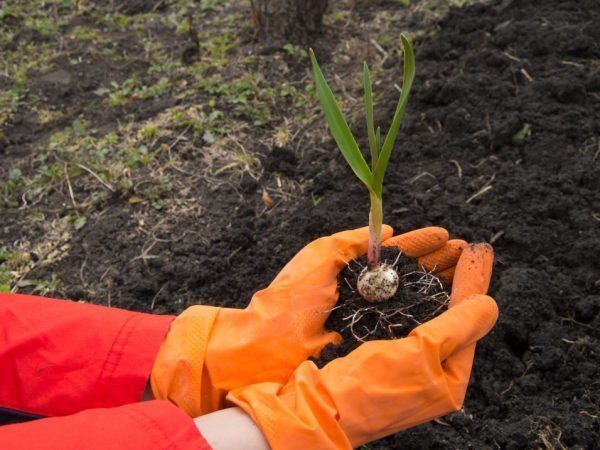 Fertilizers when planting garlic in the fall: how to fertilize the soil
Fertilizers when planting garlic in the fall: how to fertilize the soil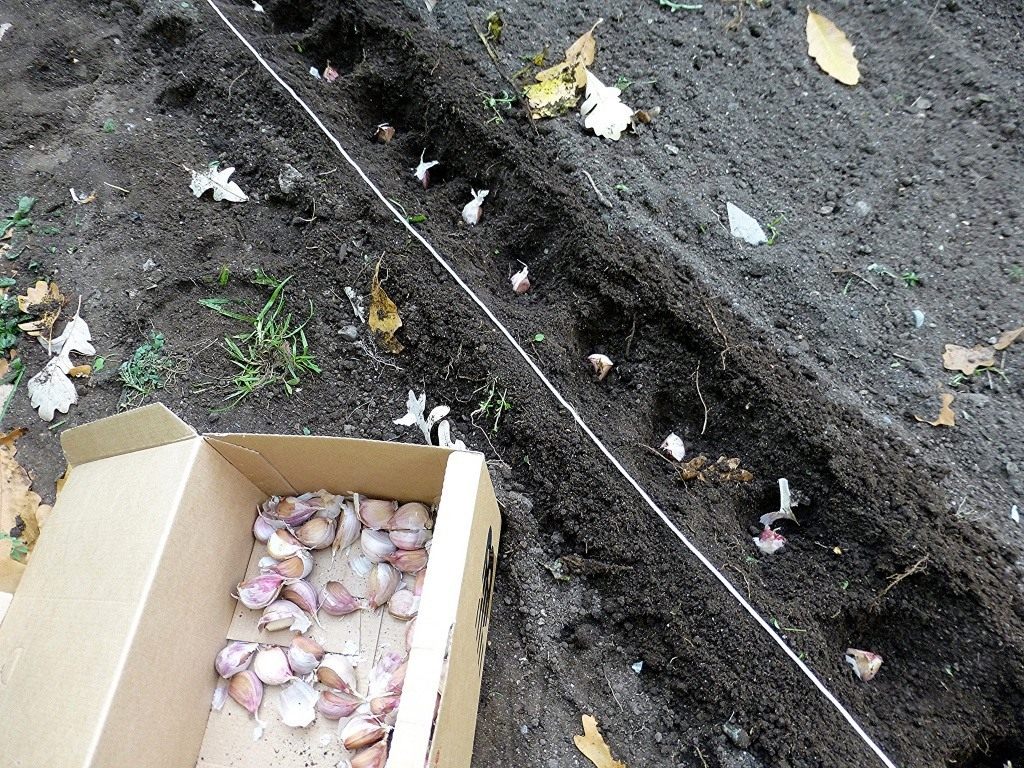 Features planting garlic in the winter in the fall
Features planting garlic in the winter in the fall